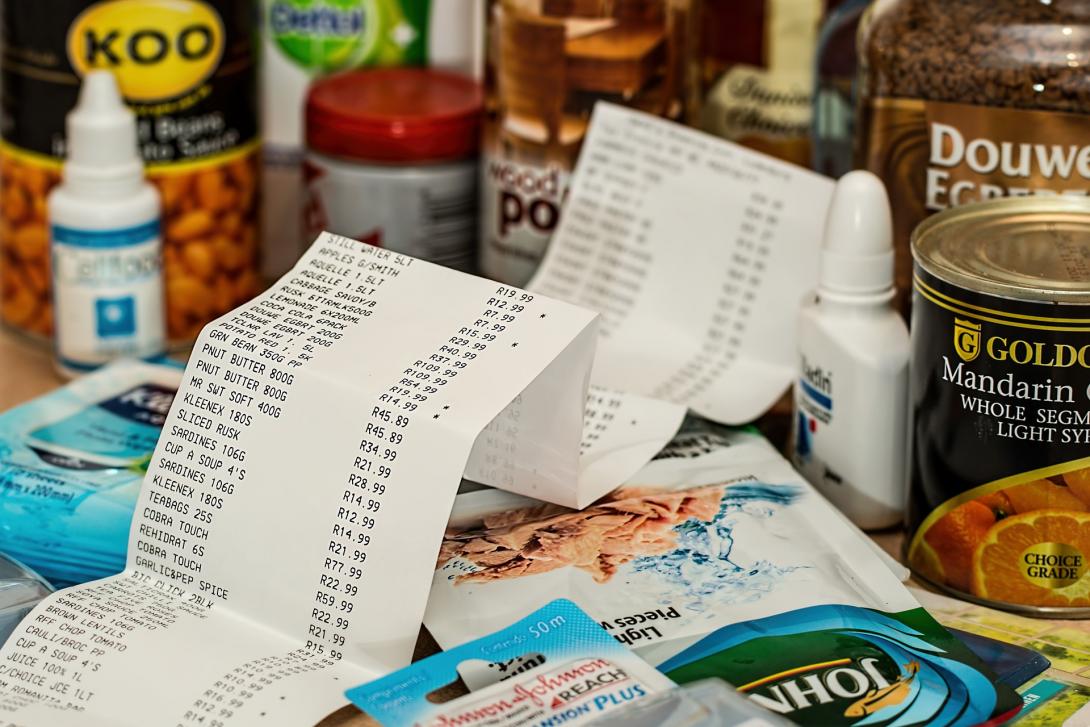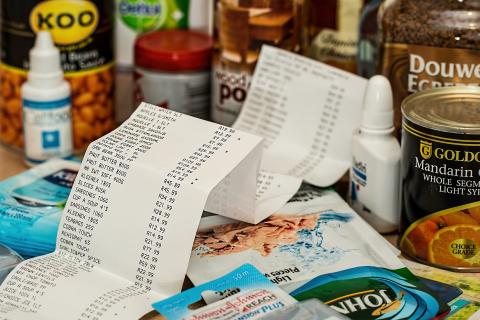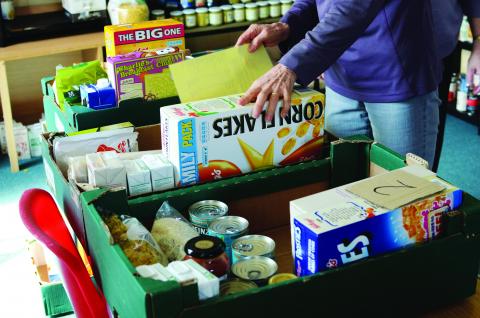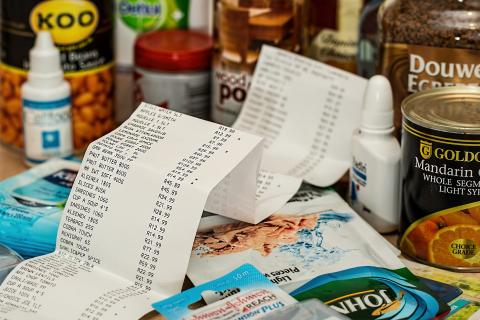24 June 2022
Food Prices Tracking: June Update

ONS Consumer Price Index shows food inflation has hit 8.6%
On Wednesday, figures from the ONS revealed that overall inflation has increased even further to 9.1% in the 12 months to May 2022, reaching another 40 year high. This increase has been largely driven by increases in food prices1: take-home retail prices for commonly purchased food and drink items have risen by 8.6% in the 12 months to May 2022, a sharp increase from 6.7% in April. The invasion of Ukraine, labour costs and trade disruption from Brexit are all being cited as reasons for this rapidly deteriorating picture.
See our Food Price Tracker for more
The Food Foundation’s Basic Basket Tracker
Last month we launched our Basic Basket tracker measuring weekly prices of a basket of food for an adult male and adult female as part of a reasonably-costed, nutritionally-adequate diet (see here for further info and methodology). Our basket provides a benchmark to assess the changes in prices over time and the impact of this on the ability to afford sufficient diet.
Since we began tracking prices 11 weeks ago, the cost of the basket of food for an average woman has increased by 4.0% and for a man has increased by 5.9% (not including promotions). These are substantial increases in a brief period of time.
These averages mask the higher changes in some products, for example sunflower oil (up 27%), cucumber (up 21%), spring onions (up 33%), pasta and lasagna (up 14%) and milk (up 11-18% depending on unit size) – this does not necessarily indicate average price changes in these products across the board, but provides examples of the sorts of increases shoppers are facing.
Our basket provides a complementary picture of changing food prices to the ONS’s measurement of food inflation using the Consumer Price Index, addressing some of the limitations in this data (CPI data doesn’t reflect the change in price of a typical food shop and nutritional requirements are not a consideration in the selection of products.)
It is important to note that the Basic Basket is not reflective of what people on the lowest incomes are able to afford or would regularly purchase. It is based on the established Minimum Income Standard research which is rooted in public consensus about what constitutes a socially acceptable diet (see FAQs for the full method), but is not affordable for many people. The Government's Family Food Survey2 (2020) suggests that households in the poorest decile spent £22.45 per week on grocery food and non-alcoholic drink shopping which is considerably less than the cost of this basic basket (£42.30 for a single woman and £45.79 for a single man), and highly unlikely to be enough to afford sufficient, nutritious food.
ONS data shows everyday low cost items increasing in price at similar rates to overall food inflation
Last month the ONS published a one-off piece of research exploring the impact of food price increases over the past year on everyday groceries, particularly looking at low cost items3. They found the average price rise of 30 everyday items in the past year was 6.7%, similar to what the CPI food inflation figures indicated. However, some items increased by considerably more such as the lowest cost pasta rising by 50% in the past year.
Contrary to Jack Monroe’s observations, the data suggested that overall, the price of the lowest cost foods increased at a similar rate to other foods. Nevertheless, for people on tight incomes, this will make up a higher proportion of their disposable budget and therefore have a bigger impact on them than people with more flexibility.
These various measures of food price increases use different methodologies and explore different angles and therefore produce slightly different findings. What they all unequivocally show is that food prices have risen drastically and that for many, food is becoming increasingly unaffordable.
Worrying predictions are that prices will continue to rise
Predictions are that high food prices are going to be seen for, at the very least, the next year. A report released this month from IGD predicts that food prices are going to increase 15% over the summer; for a family of four, that equates to having to spend £516 more on food over the year4.
Similar findings from Kantar predict that the average grocery bill will rise £380 this year5. This prediction is over £100 higher than their estimates back in April which they revised after finding grocery prices had risen 8.3% in just 4 weeks. This shows the situation is escalating more than was originally thought.
Costs of other essentials are also predicted to continue to rise, putting further pressure on food budgets. The energy bill cap is due to increase considerably once again in October, marking an increase of over 100% in just one year. Eon estimate this will force 40% of their customers into fuel poverty6. Data from the IFS7 show how lower income households are expected to be disproportionately affected by inflation as they spend a higher proportion of their disposable income on gas and electricity bills:

The cost of living crisis is not going to be short lived. The Bank of England are predicting overall inflation to hit 11% in October, and are not expecting it to fall back down to the 2% target until 20238. The one-off payments from Government to low incomes households to help with the cost of living crisis are a welcome start but longer term measures will be needed to get us through the cost of living crisis, and address the underlying issues that left many struggling to afford the essentials even before prices started to rise.

Shona joined The Food Foundation as a Project Officer in 2019 and has worked on research, policy and advocacy across a range of projects over that time including leading our food insecurity surveys and flagship annual Broken Plate reports. She now works across the charity's policy portfolio including our children's food campaigns, food insecurity and food environments. She is a Registered Associate Nutritionist with a background in clinical nutrition who worked in dietetic departments in NHS hospitals before joining The Food Foundation.

Indu joined The Food Foundation in 2019 as part of the Rank Foundation’s Time to Shine scheme, moving into a Project Officer role in 2020. She works on the Peas Please and Plating up Progress projects. Prior to joining The Food Foundation, Indu completed a MSc in Public Health and a BSc in Human Nutrition. She is interested in reducing health inequalities, children’s health and wellbeing, and sustainable and nutritious food system/diets. Indu is also a lover of veg, having recently taken up urban gardening.





